
When installing Document Imaging SDK on an operating system, the installer registers the ActiveX controls automatically. Please see the following table to see which ActiveX Controls are registered when installing Document Imaging SDK on certain operating systems.
|
|
32-bit Operating System |
64-bit Operating System |
|
Document Imaging SDK 32- bit Installed |
Registers 32 bit ActiveX Controls |
Registers 32 bit ActiveX Controls |
|
Document Imaging SDK 64- bit Installed |
Does NOT register 64 bit ActiveX Controls |
Registers 64 bit ActiveX Controls |
Registering the ActiveX controls (OCX) for redistribution
The ActiveX controls have to be registered during the redistribution to be able to use them.
The executable file that uses the ActiveX controls has to be placed in the same directory as
the DLLs, ActiveX files, .lic files, and the .dat file.
Register ActiveX control
Copy the DLLs, ActiveX files, .lic files, and the .dat file into the same directory.
Open a command line (the command line has to be run with Administrator privileges). navigate to the directory of the OCX file and type in the following command to register a control:
regsvr32.exe "name of the ocx file"
Example:
Registering the BiDisp.ocx:
1. Copy the DLLs, ActiveX files, .lic files, and the .dat file into the same directory.
2. Open a command line (cmd.exe) with administrative privileges
3. In the command line navigate to the directory where the executable file, DLLs, ActiveX files, and .ini files placed
4. In the command line execute the following command:
5. Regsvr32 BiDisp.ocx
Unregister ActiveX control
To unregister the control, add the /u switch to the command (the command line has to be run with Administrator privileges).
regsvr32.exe /u "name of the ocx file"
Example:
Unregistering the BiDisp.ocx:
1. Open a command line (cmd.exe) with administrative privileges
2. In the command line navigate to the directory where the executable file, DLLs, ActiveX files, .lic files, and .dat file placed
3. In the command line execute the following command:
Regsvr32 /u BiDisp.ocx
Adding reference to a registered ActiveX control using C# or VB.NET
Please make sure the correct ActiveX control (32 bit or 64 bit) is registered on the system.
Please do not use the “AnyCPU” build platform for your application. If you want to build an application that runs on both 32-bit and 64-bit systems, please compile your application using the x86 build platform. If the developer sets the build platform to “AnyCPU”, and the application is executed on a 64-bit system, then the application will only find the 64-bit controls, it won’t find any 32-bit controls.
If the x86 build platform is not listed in Visual Studio, you can add x86 by selecting the configuration manager from the list and add the x86 platform.

Click on the <New…> option
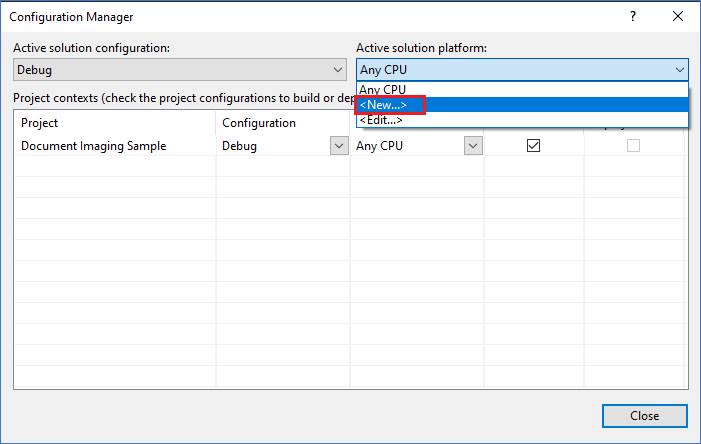
Please make sure to change the Type or select the new platform option to x86 or x64, and click on the OK button.
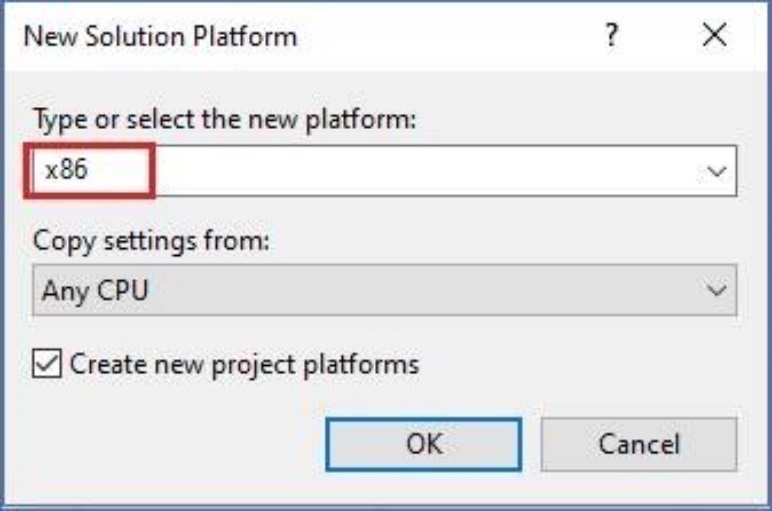
To add a reference to the registered ActiveX control using C# or VB.NET, go to Visual Studio, open Your C# or VB.NET Project, and right-click on the References > Add Reference... option at the Solution Explorer.
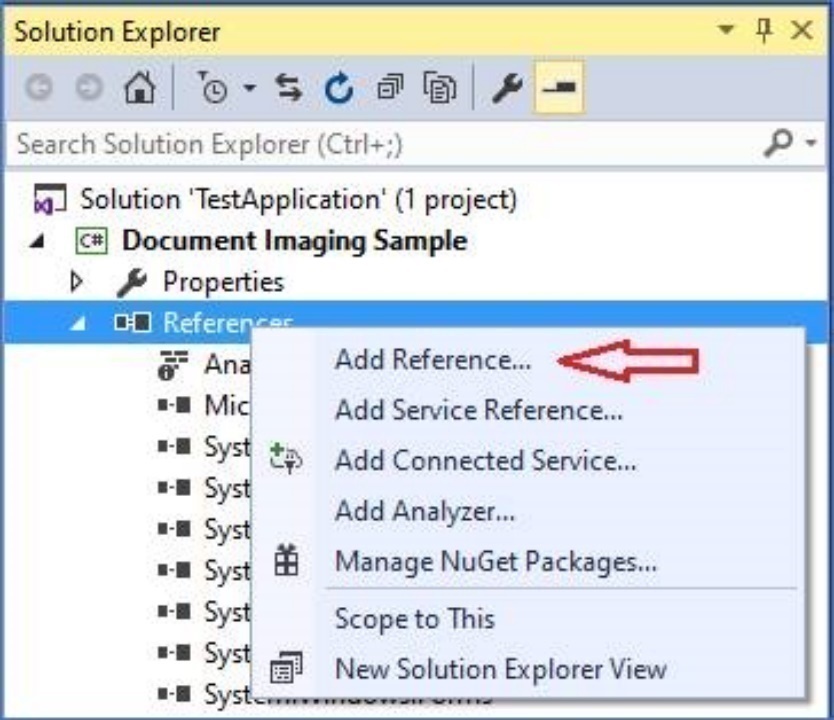
Find and check the controls you want to use on the COM page (For example: Black Ice BIDisp ActiveX module), and click on the OK button.
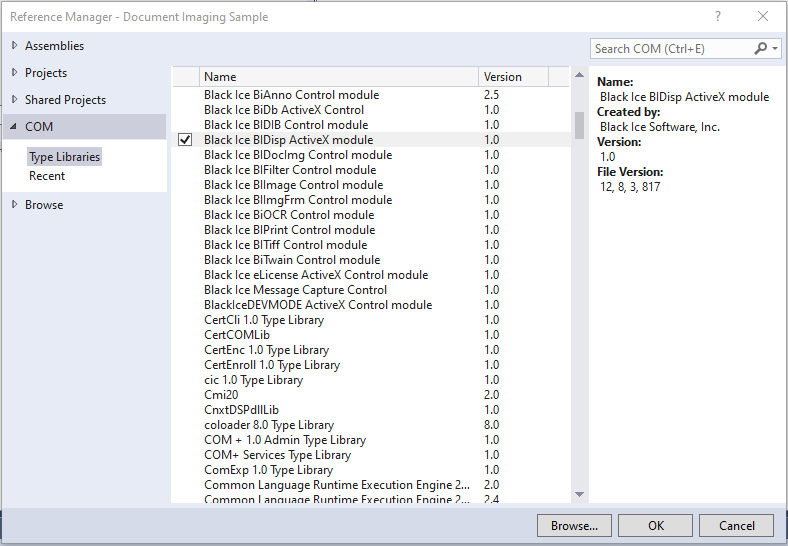
As a result, the Lib will be added to the Visual Studio references.
Example:
BIDISPLib
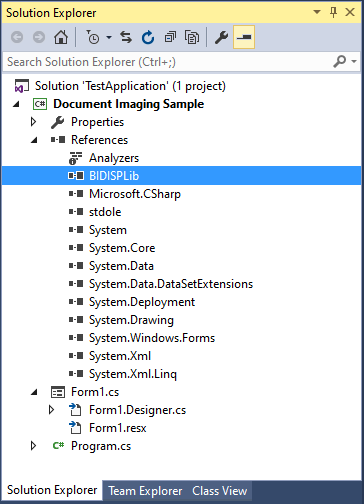
Build your project with the registered ActiveX control.